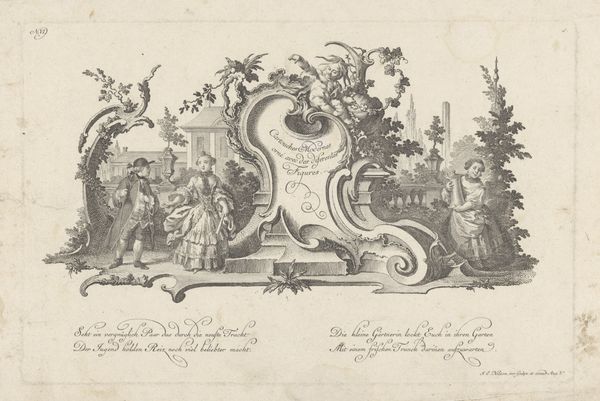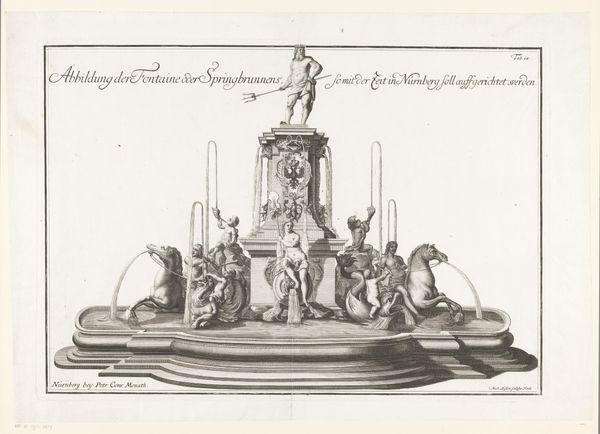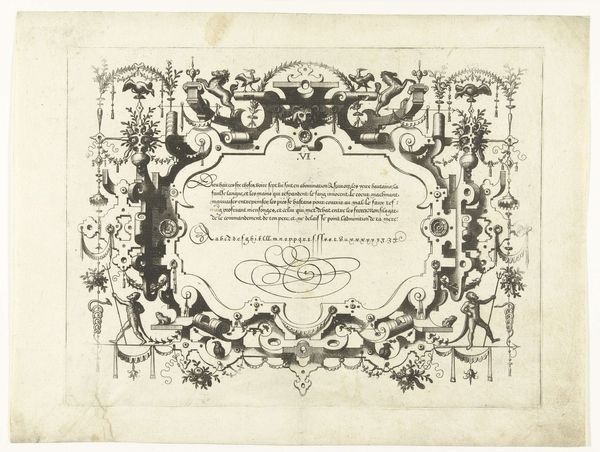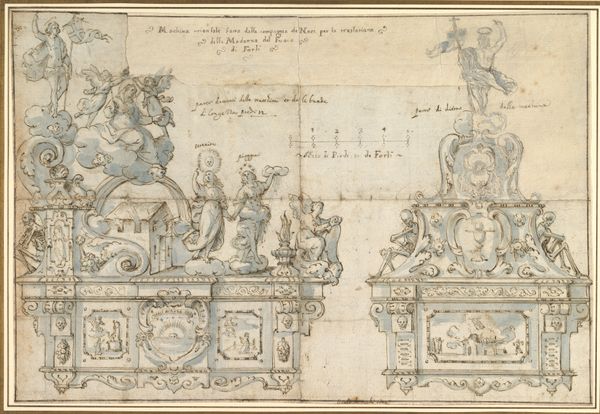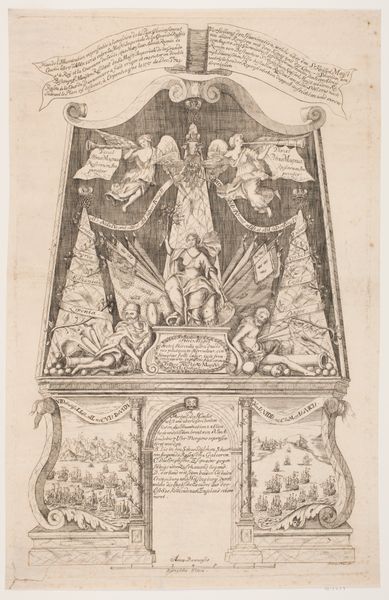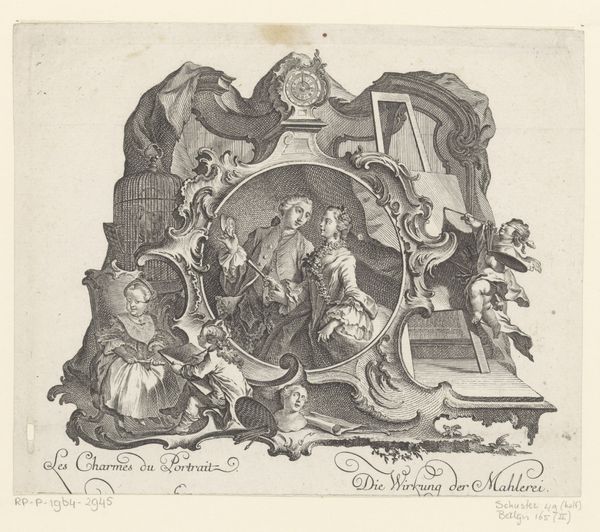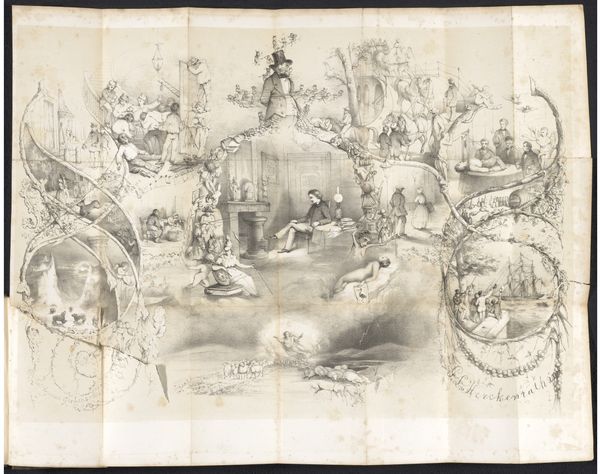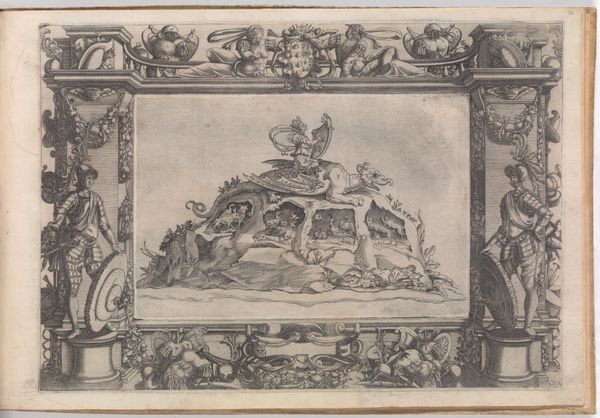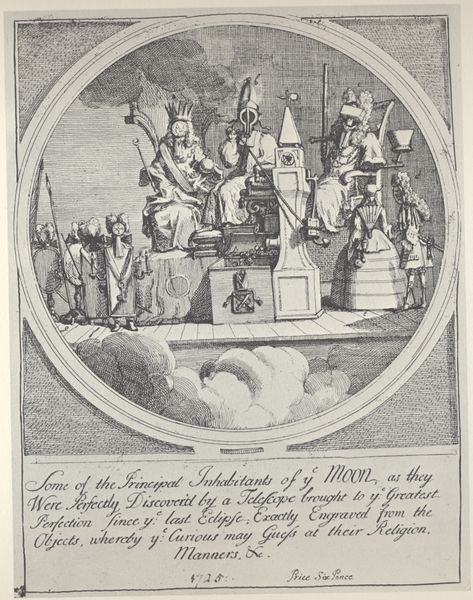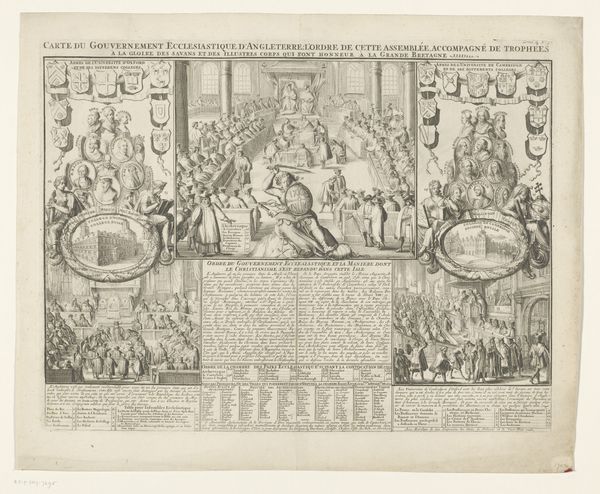
drawing, ink
#
drawing
#
baroque
#
pen sketch
#
landscape
#
ink
#
history-painting
#
watercolor
Dimensions: 355 mm (height) x 472 mm (width) (bladmaal)
Curator: Editor: So, this is Marcus Tuscher's "Udkast til et monument for Frederik V på Amalienborg," a drawing in ink and watercolor from 1750. It has a preliminary feel, but it’s so grand. How do you interpret this vision? Curator: The drawing represents a critical moment in how power and privilege are publicly presented and perceived. Who gets memorialized and how is always a political decision. What do you notice about the figures surrounding Frederik V? Are they allegorical, perhaps? What stories do they tell? Editor: I see figures that seem almost mythical—a lion, maybe a goddess? They do feel symbolic, propping up Frederik, literally at the base. Are we meant to accept this hierarchy without question? Curator: Exactly! This piece embodies the visual language of power. Consider how the Baroque style itself—the opulence, the grandeur—functions to legitimize the monarchy. Think about who this monument was intended to impress, and whose stories are marginalized in its construction. How does reflecting on today's discussions around monumentality change your perception? Editor: It makes me question the uncritical celebration of historical figures. It's not just about aesthetics, it is about the messages these artworks send, who they include, and, more importantly, who they exclude. Curator: Precisely. It prompts us to consider whose perspectives are privileged and how art can both reflect and reinforce social hierarchies, even today. I wonder, how we might reimagine public spaces to foster inclusivity, instead? Editor: Thinking about art as a reflection of cultural power makes history come alive, in a way. Curator: Agreed. Let’s keep critically examining what stories our public art tells, and for whom.
Comments
No comments
Be the first to comment and join the conversation on the ultimate creative platform.

